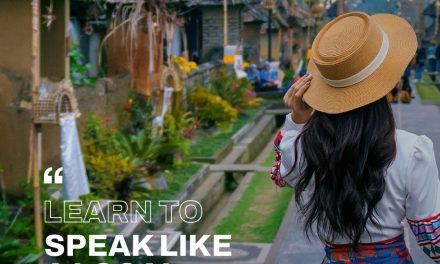Nestled in the heart of Bali, Ubud is a vibrant oasis known for its lush landscapes, serene atmosphere, and, more importantly, its rich artistic heritage. If you’re looking for an immersive experience that combines creativity, culture, and community, there’s no better way than learning handicraft techniques in Ubud.
Why Ubud?
When I first visited Ubud, I was enchanted by its charm. The streets were lined with artisan shops, galleries, and workshops where skilled artists crafted beautiful pieces of art. One afternoon, as I sipped a cup of freshly brewed Balinese coffee, I overheard a conversation about a local weaving class. My curiosity was piqued! I thought, “What better way to embrace the local culture than by learning a traditional craft?”
A Journey into Handicrafts
I enrolled in a week-long workshop focused on Balinese batik, a traditional cloth dyeing technique that has been practiced for centuries. On the first day, I arrived at the studio, greeted by the warm smiles of fellow participants and our instructor, a master batik artist named Made. She had a calm yet infectious enthusiasm that instantly made me feel at home.
The Magic of Batik
Batik involves a meticulous process of applying wax to fabric before dyeing it. At first, I struggled with the precision required to create intricate patterns, but Made’s gentle guidance helped me overcome my initial frustrations. We started with simple designs, and as I watched the colors come to life on the fabric, I couldn’t help but feel an immense sense of accomplishment.
Imagine sitting in a sunlit studio, surrounded by the aroma of natural dyes and the sound of soft Balinese music. As I dipped my brush into the dye, I felt a connection to the generations of artisans who had come before me. This was not merely a class; it was an experience steeped in history and tradition.
Practical Tips for Learning Handicraft Techniques in Ubud
If you ever find yourself in Ubud, here are some practical tips to enhance your experience in learning handicraft techniques:
1. Research Workshops in Advance
Ubud offers a plethora of options when it comes to handicraft workshops—everything from wood carving and painting to silver jewelry making and traditional dance classes. Before you go, spend some time researching various options. Websites like Airbnb Experiences and local artisan studios often list classes that can be booked in advance.
2. Embrace the Journey, Not Just the Outcome
As I learned during my week in Ubud, the process of creation is just as important as the final product. While I initially focused on trying to produce a perfect piece of batik, I soon realized that the true joy was in the experience itself—the new friendships formed, the stories shared with fellow participants, and the insights gained from Made.
3. Be Open to Feedback
In my craft classes, I was often hesitant to show my work, worrying it wouldn’t measure up. However, Made encouraged us to share our progress. To my surprise, the feedback was always constructive and uplifting. Being open to critique allowed me to improve my skills and discover my unique style.
4. Explore Local Markets
After each class, I enjoyed exploring local markets filled with handcrafted goods. I found myself drawn to beautifully made items that reflected the rich culture of Bali. Visiting these markets not only provides inspiration but also an opportunity to support local artisans.
Personal Anecdotes that Stick
One of my favorite memories from my time in Ubud happened during an impromptu group outing. After a hefty breakfast of local delicacies, our group decided to take a trip to the village of Too Toh, where we met an elderly gentleman who demonstrated the art of traditional wood carving.
With a single stroke of his chisel, he transformed a block of wood into a stunning elephant sculpture. We all stood in awe, captivated by the grace and refinement of his craft. Afterward, we gathered in a circle to try our hand at carving. Let me tell you: it wasn’t easy! My first piece looked more like a lumberjack’s disaster than a work of art. But laughter filled the air as we encouraged one another, creating bonds that would last well beyond the workshop.
Conclusion
Learning handicraft techniques in Ubud is more than just picking up a new skill—it’s about connecting with culture, nature, and community. Whether you dive into batik, wood carving, or any of the myriad options available, you’ll find that the process is deeply enriching.So, if you ever find yourself wandering through the enchanting streets of Ubud, don’t hesitate to enroll in a workshop. Allow yourself to get your hands dirty, learn from the masters, and embrace the artistry of Bali. Trust me, it will be an experience you won’t forget. Who knows? You might just discover a hidden talent or two!






